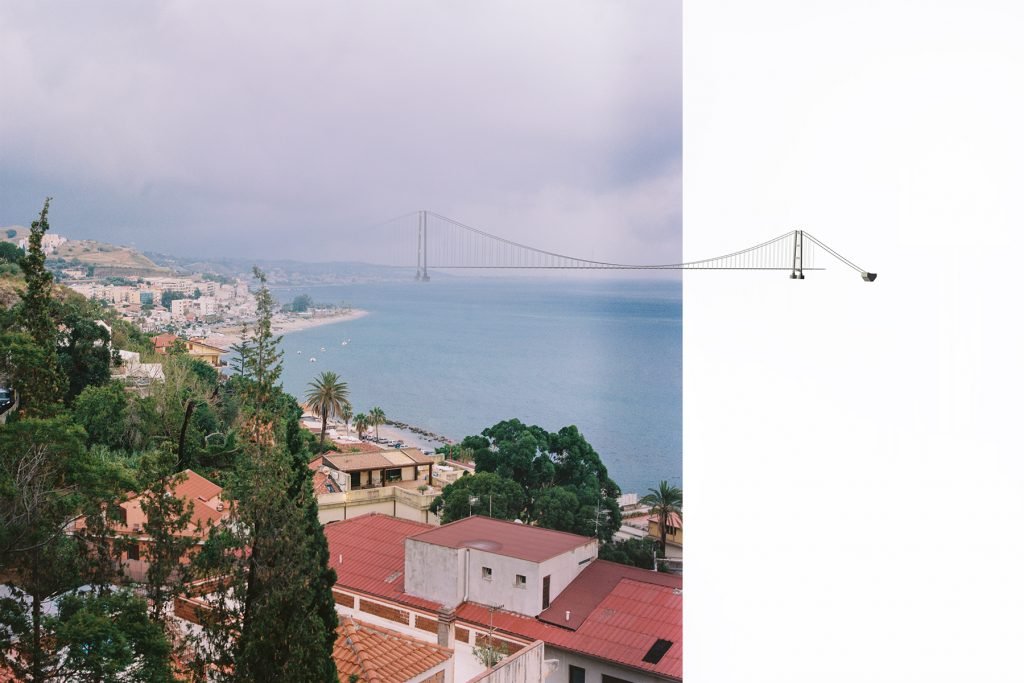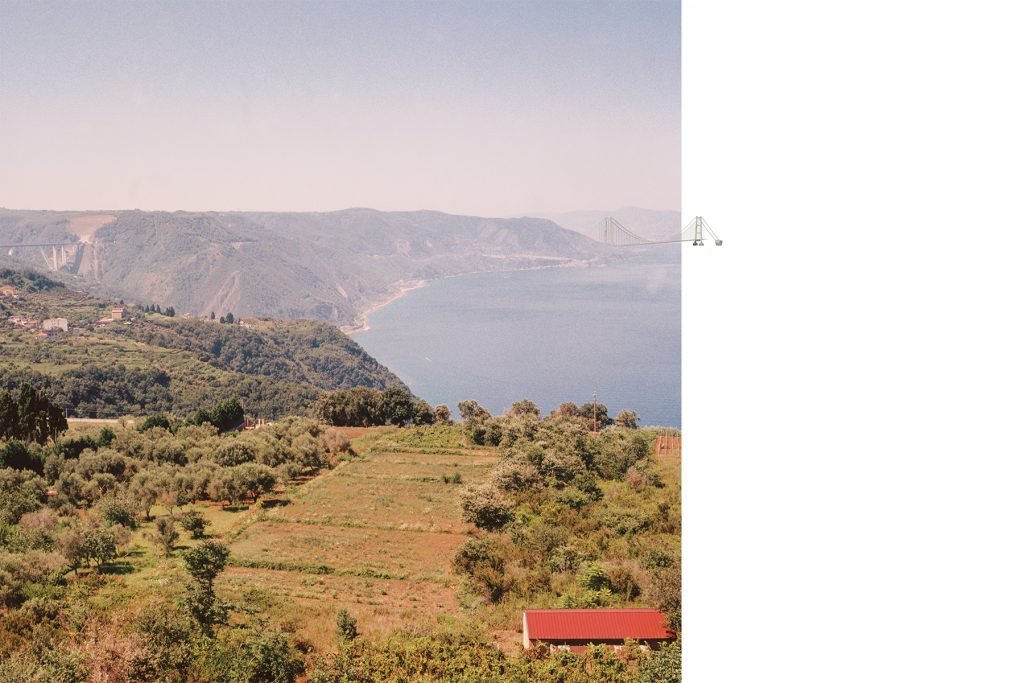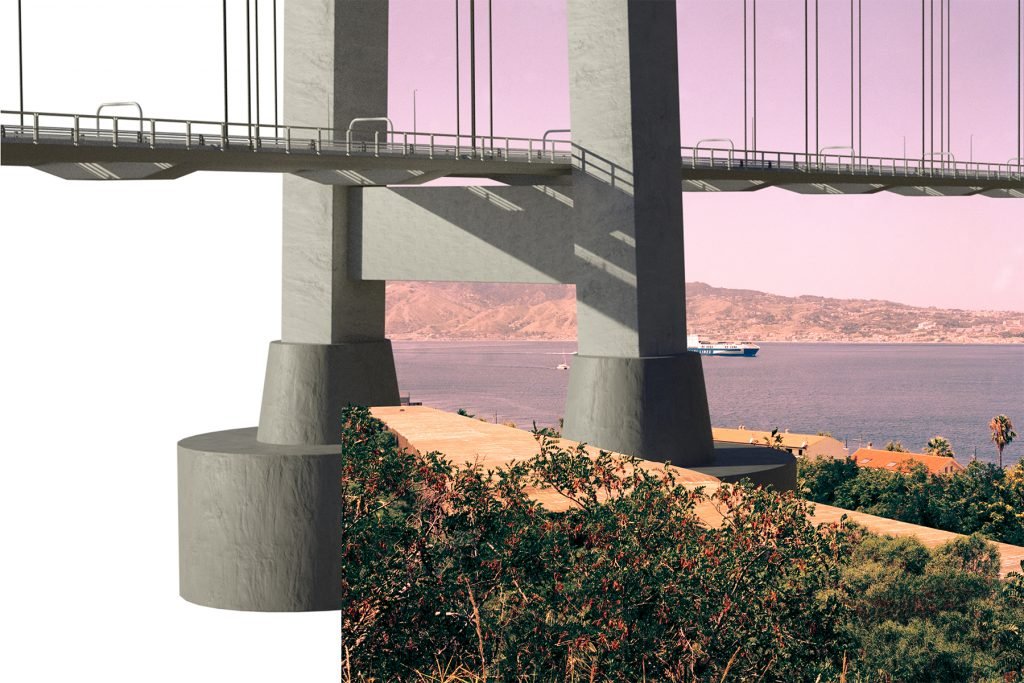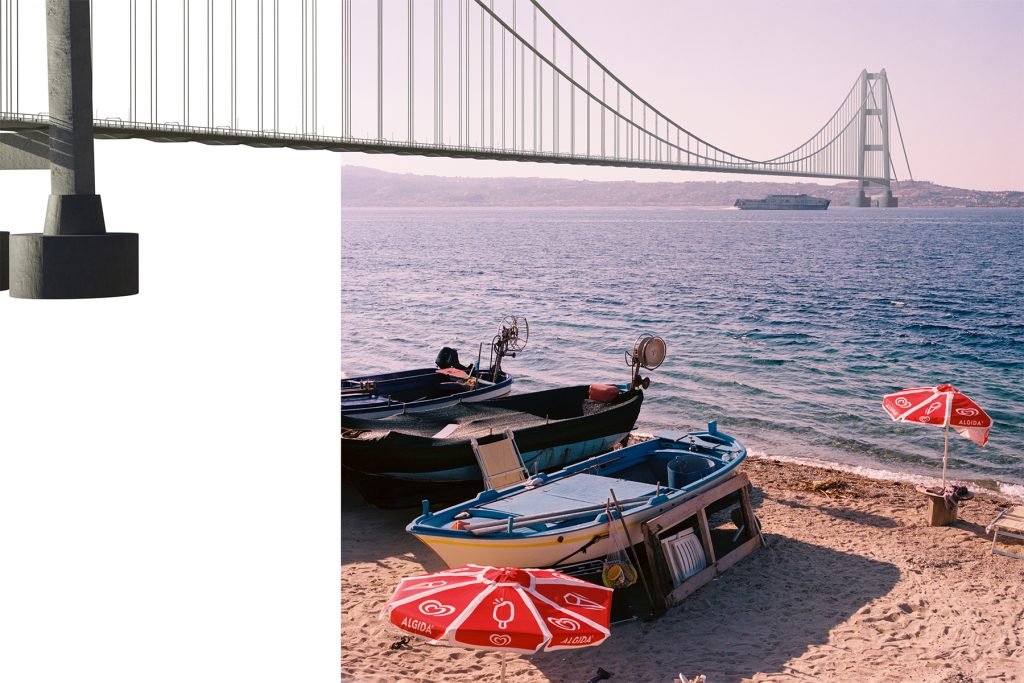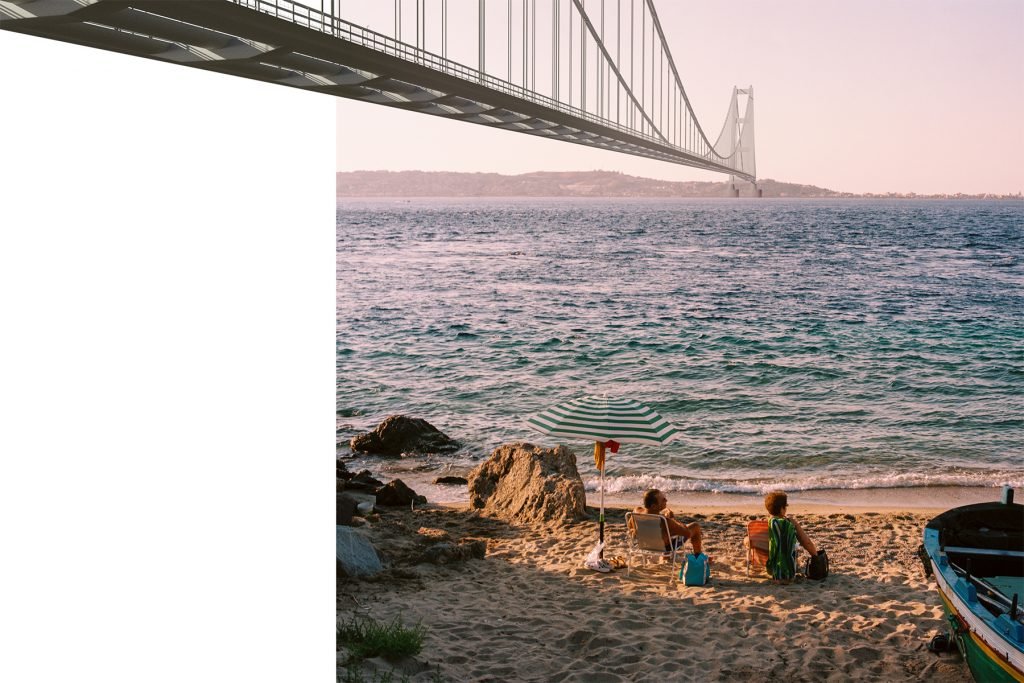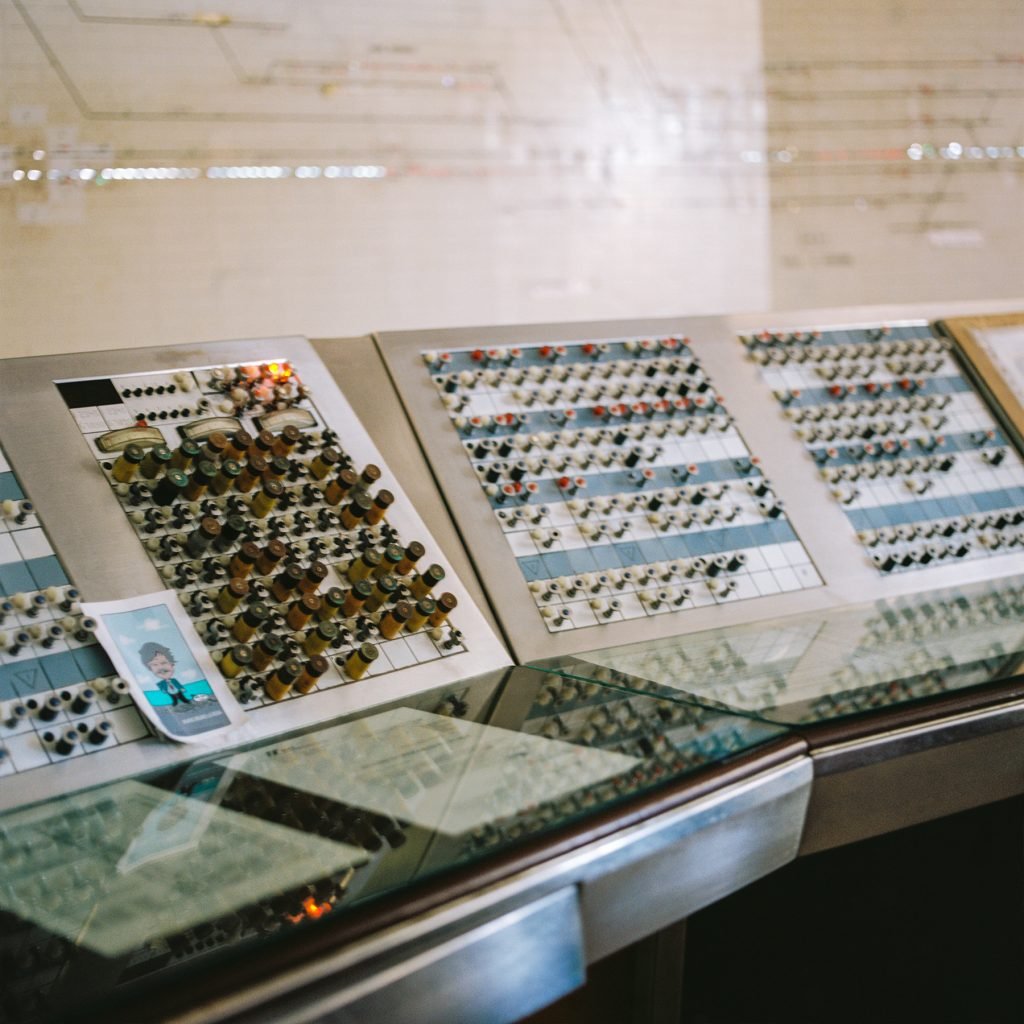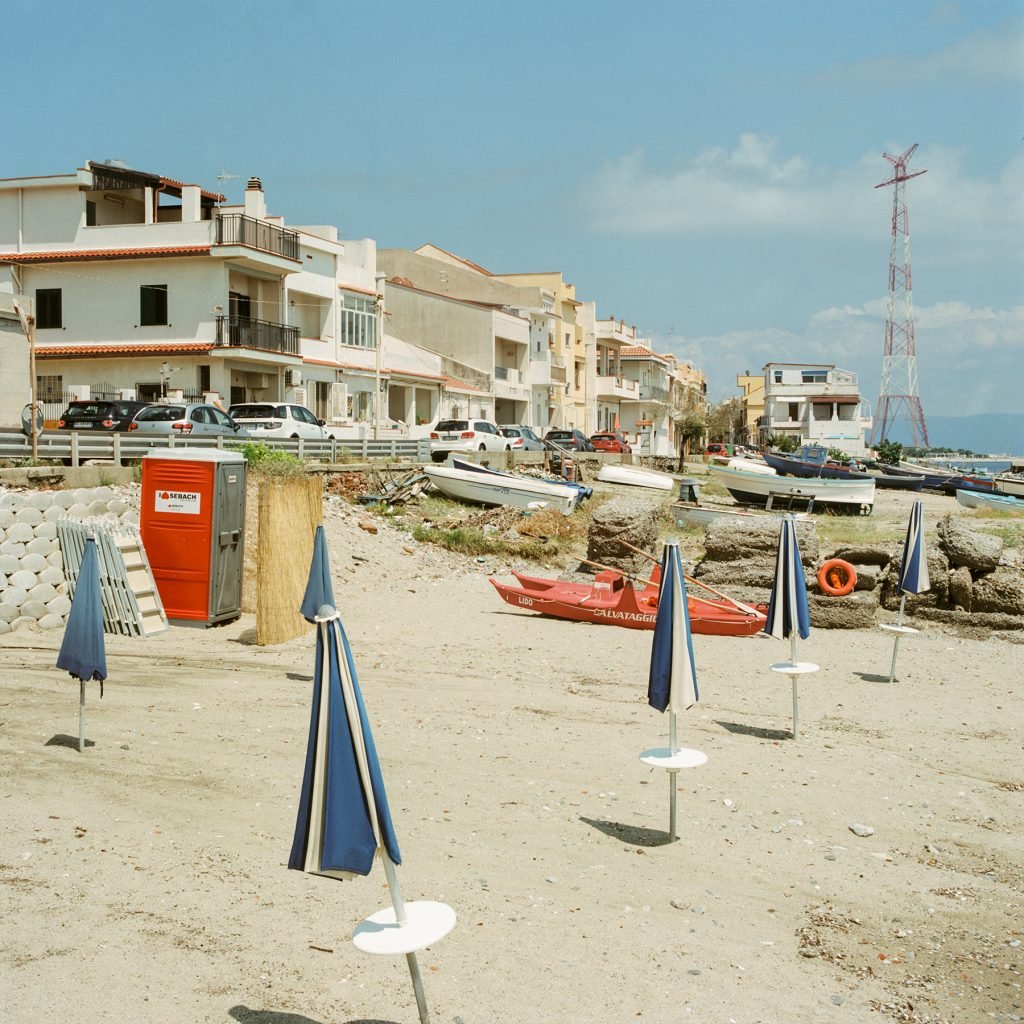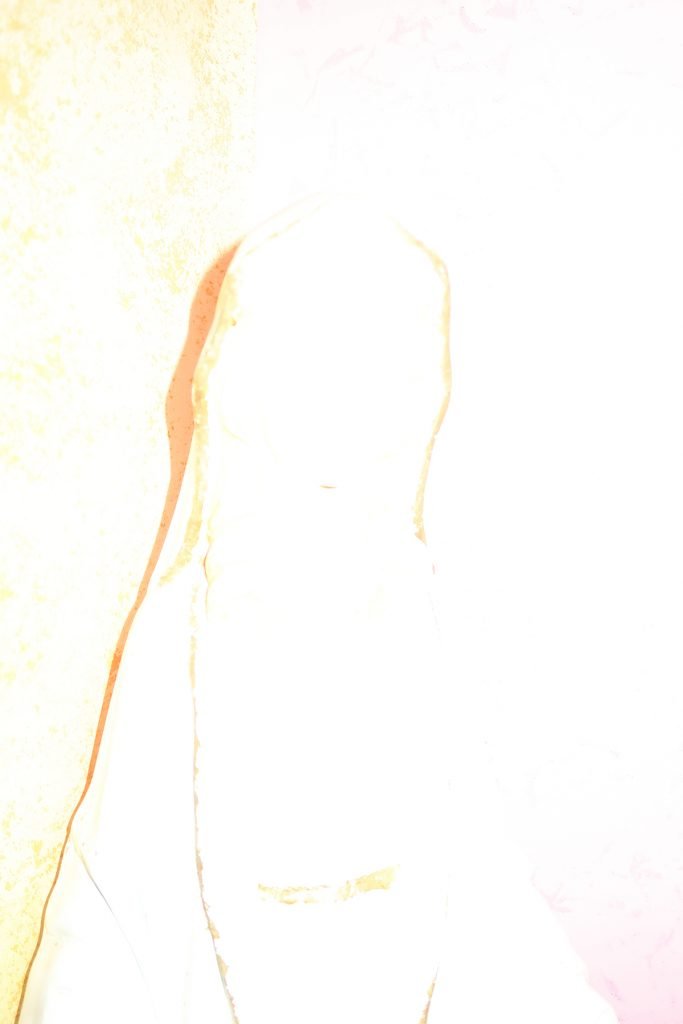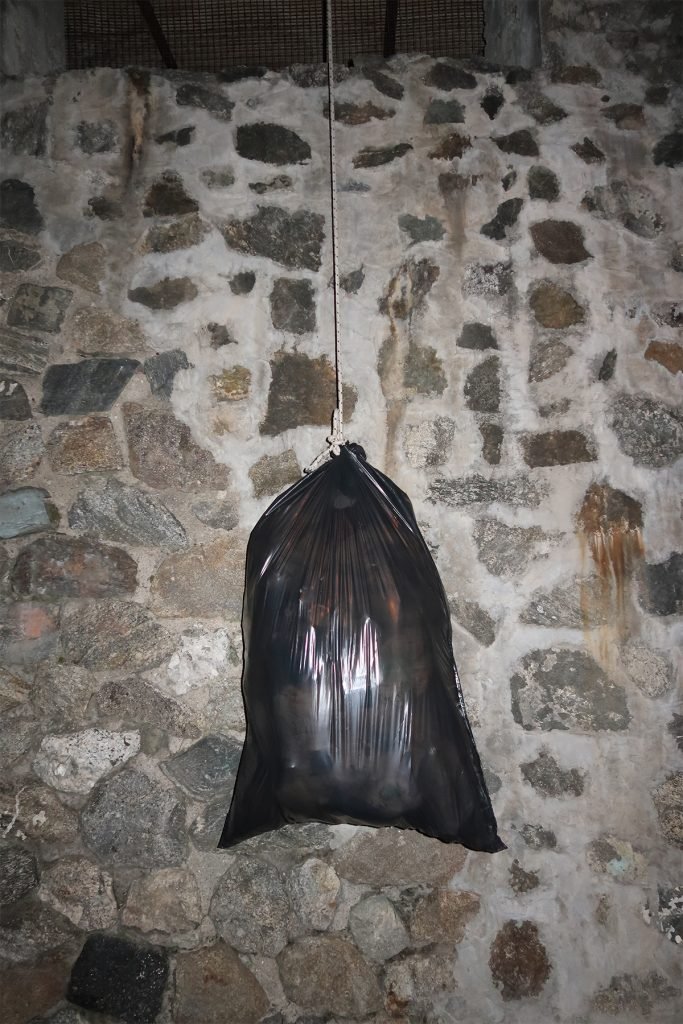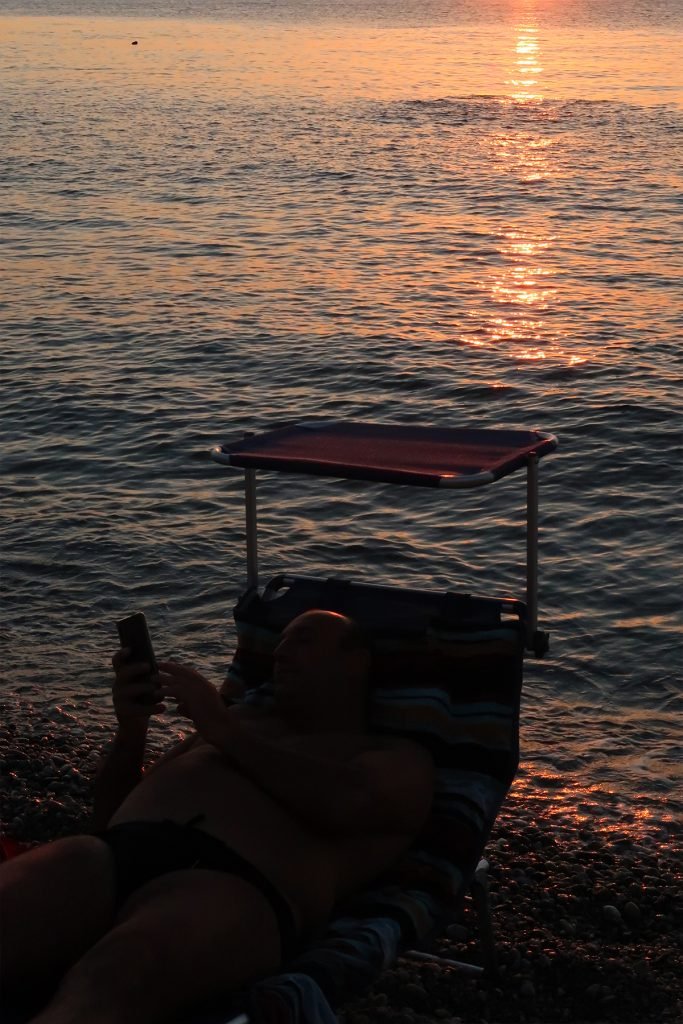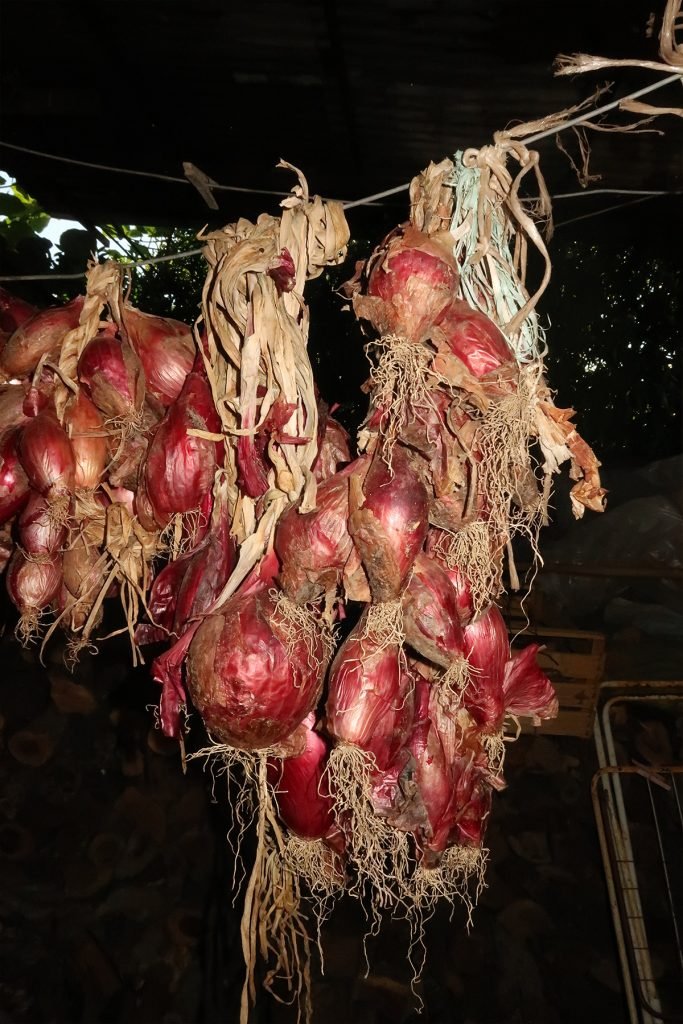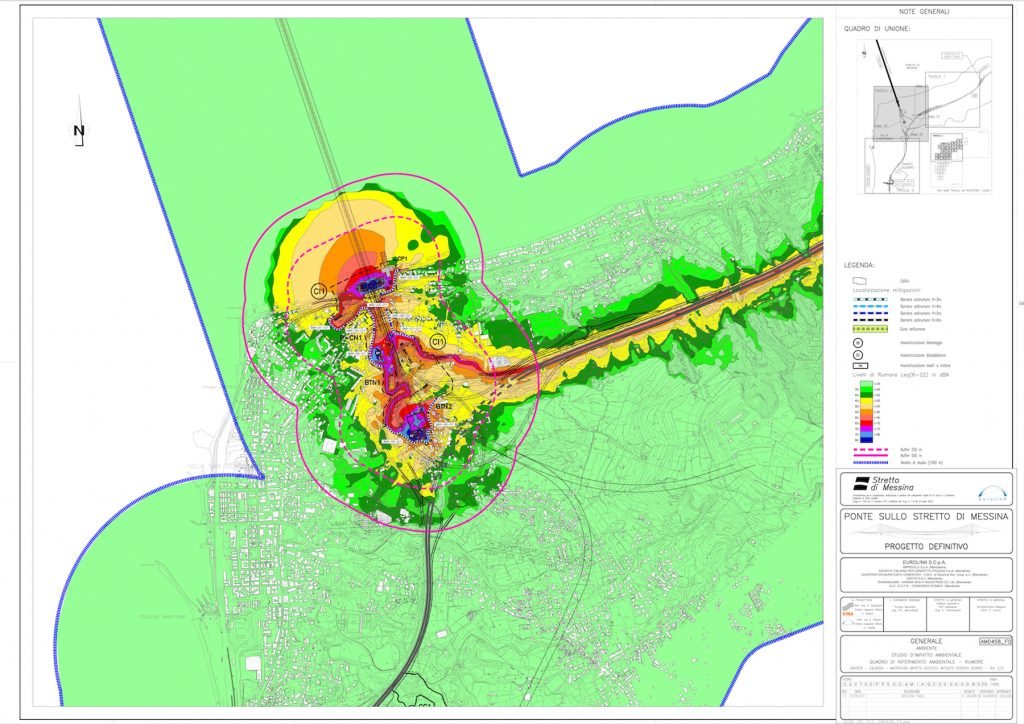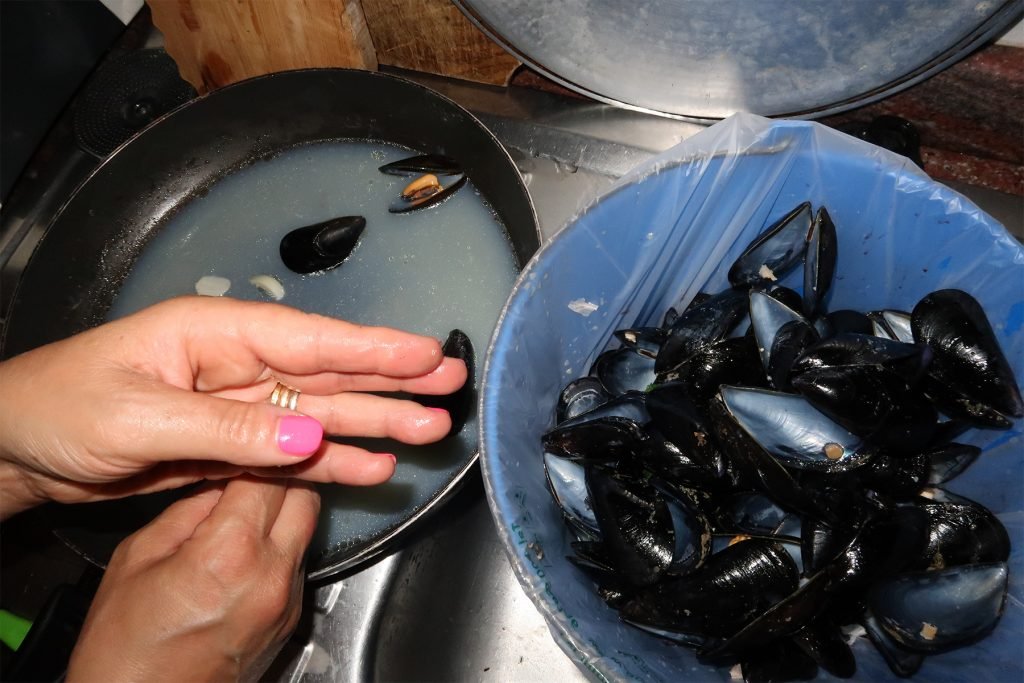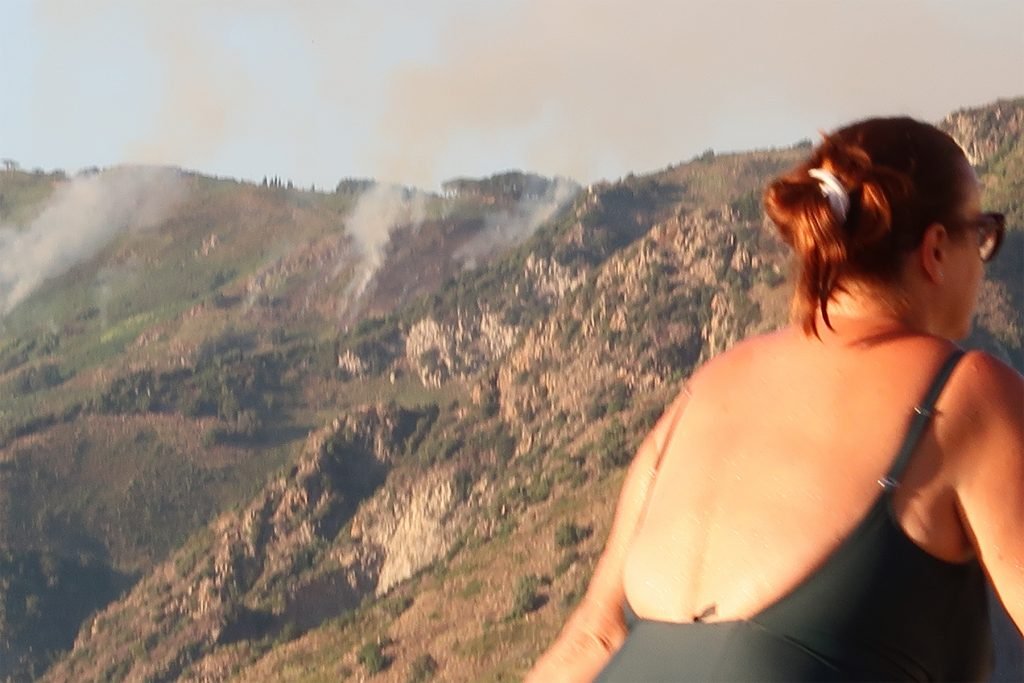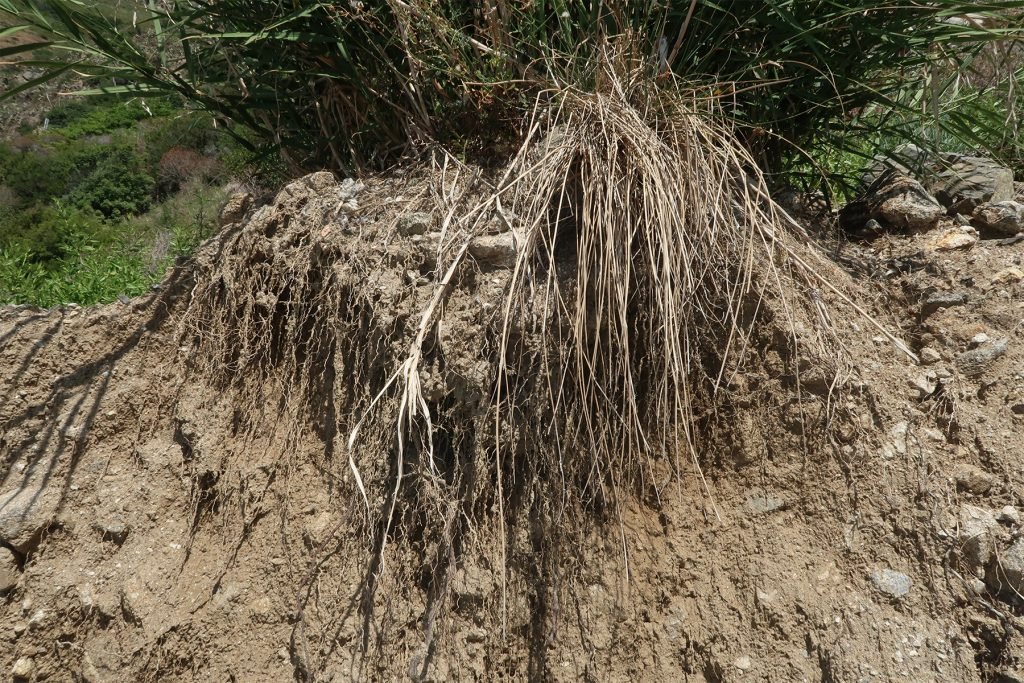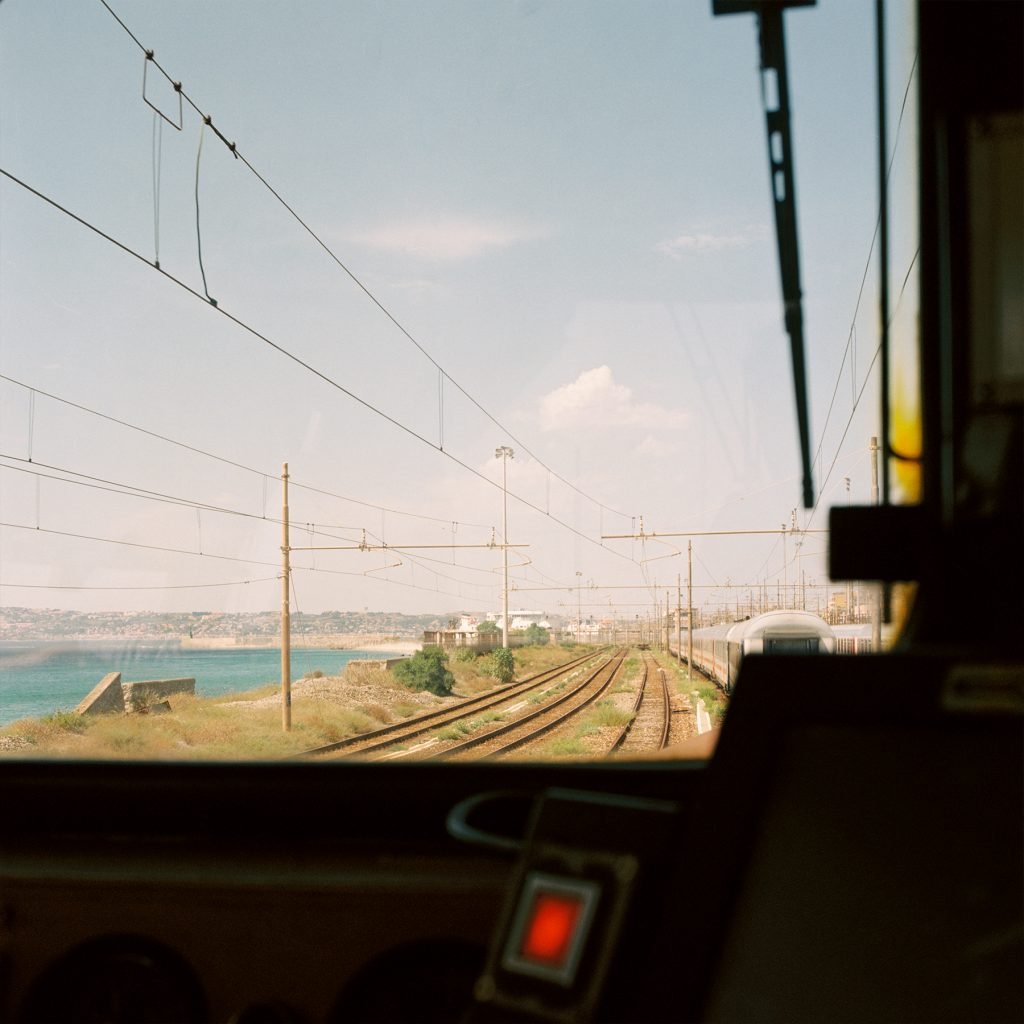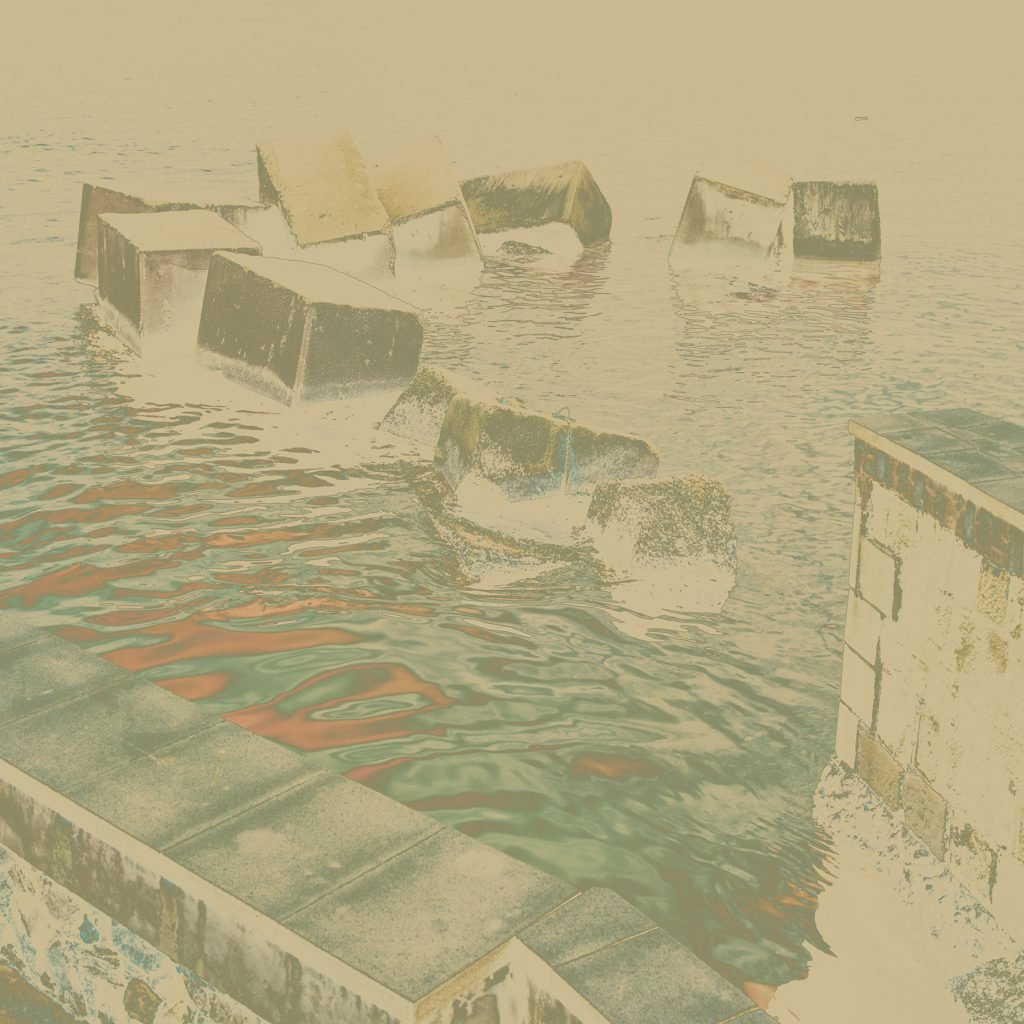INTRODUCTION:
The fascinating idea of a stable connection between Sicily and mainland Italy has been obsessively dreamed by the many people who have inhabited the Messina Strait for centuries. Since Roman times, Lucius Caecilius Metellus had planned to transport the elephants captured to the Carthaginians during the First Punic War through the Strait up to Rome, to celebrate the Empire’s victory over its enemy (Angelini, 2011).
In more recent times, Silvio Berlusconi had made the construction of the Messina Strait Bridge his biggest electoral promise to the Italians who voted him Prime Minister in the early years of 2000 (Ibid.). Despite the numerous accusations of collusion with the Mafia, the technological challenges not being addressed and intentionally overlooked environmental damages, Berlusconi stubbornly pushed the project through the many bureaucratic stages until it had finally been approved by his government and construction works were ready to begin. In 2010, however, world recession had a decisive impact on the Italian economy and contributed to exposing the many weaknesses of such a monumental project (Ibid.), bringing its construction to an indefinite halt that lasts until today.
Many had argued in favour of the bridge’s construction. To Europe’s eyes, the Messina Strait has always been considered an infrastructural funnel to the African continent (Repetto, 1958). Its transportation system undergoes permanent expensive delays and creates inefficiency to the circulation of goods. The bridge would be resolving the hindrance that today still affects the Berlin-Palermo axe and drastically expand the borders of Europe beyond the Mediterranean Sea (Angelini, 2011).
To the Italians who supported this project, the bridge has been sold as the ultimate greatest solution to all the problems afflicting the South of Italy since the country’s Union in 1861 (Ibid.). The poorer Southerners would benefit from a promised economic boom that is supposed to trigger the economic flywheel of the Second and Third Sector like never before. The beautiful monumental scale of the bridge and its cutting edge technology would bring people from all over the world to admire and experience the wonders of Italian architectural genius (Ibid.). When dreaming of this project, it is not to be forgotten that the Messina Strait Bridge is designed to be the longest suspended single span in the world. A daring architectural achievement, a one of its kind urban solution that would turn the world’s attention to the Strait and put Italy on the map of exceptional architecture for the next century to come. After a closer look to past events, It is difficult to deny that in this case architecture was being used by the political power of the time to expressively ‘seduce, to impress, and to intimidate’ (Sudijc, 2005, p.2). An attitude that ultimately failed to accomplish a project flowed from its very beginning.
The most negative quality of an imagined object is ‘namely, its non-existence’ (Sartre, 1940, p.xvi) and its ability to take over the multifaceted complexity of reality. A key role to the manufacturing of an overexcited attitude in the making of the bridge in people’s consciousnesses has been played by ingenious advertising and promotional campaigns. A propagandistic approach that involved the consortium of companies in charge of its construction together with the political organs that supported its bureaucratic odyssey. By stimulating people’s imagination through propagandistic advertising, the government had taken advantage of the consequent ‘infantile refusal’ (Sartre, 1940, p.141) by the amused crowd to take difficulties into account and avoided a more ‘rational-critical discourse on political matters’ (Calhoun, 1997, p.9) that would have affected the making of the bridge. This resulted in the possibility for the government to successfully push the project to its final bureaucratic approval.
Glorious propagandistic imagery of the bridge already sitting within the Strait had been circulating since the beginning through a variety of media channels, providing evocative images that had the power to plunge the viewers ‘into the depth of experience itself’ (Barry, 1997, p.75). Enhancing the monumental qualities of the bridge succeeded in generating emotional responses that had overtaken more rational and critical views. This strategic use of the ‘power of images’ (Ibid., p.11), together with a carefully elaborated propagandistic discourse, played a decisive role in raising consent from the public during Berlusconi’s engagement with the bridge’s execution (Angelini, 2011). The understanding of these circumstances has been taken as a starting point of this artistic research, carried on by implementing a similar visual strategy that aims at subverting the official narrative, consequently creating a counter-narrative designed to challenge and question the ‘power of images’ (Barry, 1997, p.11) from within, and ultimately deconstruct the celebratory imagery built around the bridge.
Today, in a world that has been hit by a global pandemic from which it is yet to be fully recovered, new and unexpected emergency funds have been unlocked for the relaunch of European economies post-pandemic. An important slice of this money had been destined to Italy as one of the worst-hit state members of the European Union. It is with no surprise that few political wings within the government have proposed to relaunch the building of the bridge as a way of fuelling economic growth for the entire country. This renewed excitement for the bridge intentionally ignores the disastrous sum of money already spent for all the preliminary studies, design competitions, design plans and bureaucratic stages, calculated to be over the two billion euros (Angelini, 2011). On top of that, the money budgeted for the construction of the bridge in the latest project approved by the government goes over seven billion euros. A financial commitment with huge repercussions on the future of the Italian economy. Behind this renewed interest, it is easy to recognise the same greeds and ruthless plans to generate consent from an unfortunate crowd on the edge of a possible economic catastrophe.
This project aims at raising international awareness around the events that occurred in the failure of the Strait of Messina Bridge. This is done through the implementation of a visual strategy designed to question the necessity of an infrastructure that is most certainly destined to bring further chaos, economic despair and that will be inevitably subjectable to obsolescence due to the fast changing pace of modern society and its shifting needs (Ibid.). It aims at highlighting the danger of permanent disruption of a landscape and natural/cultural environment that is the patrimony of humanity and that has been for long abused, turning the Strait to a nameless stretch of sea like any other (Ibid.).
Born in one of the two cities of the Strait myself, I have been drawn to this story by a personal desire to understand the social and historical context behind the bridge’s events. With this work, I set to explore the reasons behind its failure and commit to bringing international attention to why a bridge between Sicily and Calabria is nothing more than a propagandistic and obsolete attempt at solving social end economic matters with a superficial cosmetic operation that is designed to feed political vanities and express power in the same old way of populist architecture well known to the Italian crowd (Sudijc, 2005). Although technologically and economically possible, the construction of the bridge could seriously alter the region’s cultural and environmental heritage (Bettini, Guerzoni, Ziparo, 2006). Its debatable exigency can ultimately be nothing more than a residue of old school mentality on urban progress, fueled by the corrupted interests of the few political and private organisations involved in the making of such a monument to waste. It is important to understand that ‘to build is to exert power […]. To imagine otherwise is innocent or pretentious’ (Moore, 2012, p.169). Under this light is evident that the Strait of Messina bridge is, therefore, nothing more than an ‘exertion of power’ (Ibid., p.169) that failed to be accomplished.
THE RESEARCH PROCESS:
The story of the Messina Strait Bridge has been living in my mind since childhood. Being born in Reggio Calabria, on the opposite side of the Strait facing Messina, and having lived there for a short period of time, the idea of a bridge that would join Sicily to Mainland was an almost reality thought.
The late 20th century and early 2000 were the peak years for the making of the bridge. This was the time when the main scientific studies had been conducted and approved. People had started to imagine their life after the coming of the bridge and even envisioned future business opportunities that would have improved their lives.
Due to my very early age, the memories from this time are vague and rather fantasised. Because of this, prior to the beginning of my project, I had no actual reliable knowledge of the facts that informed this story. I, therefore, had to begin a full immersion into the vast amount of literature written around the events. Aside from that, another main source of knowledge that I was determined to confront was the one residing in the voices and memories of the local people. An oral tradition of fact, assumptions, groundless beliefs, and unreliable sources influenced by a generic attitude of superficiality toward crucial matters of social discussion – possibly due to lack of trust in the governmental system over the years.
The access to this specific knowledge had proved to be often confusing, discouraging and only at times appropriate. Nonetheless, I considered this to be an essential part of the formulation of my expertise toward this matter. It is only by experiencing the project through people’s words and tales that I had a chance to acquire valuable insight into the fundamental meanings of these events. This has been pursued by spending a period of slightly more than two weeks over the summer of 2020, where I had the chance to meet and talk with many of the locals. Some directly involved in past crucial events and belonging to the sphere of the political entourage of the region, and some others simply being citizens of the Strait. Those meetings allowed me to feel the matter through a humanistic point of view that I believe is paramount for the understanding of such phenomena. A prospective that has been drastically overlooked by the organisations entitled to pursue the construction of the bridge (Ibid.), often counter-argued with cold documents, numeric prospects, graphs, fallacious scientific studies, reports and predictions of supposed future benefits for their economy.
To work on a project like this meant undertaking a level of research never experienced before, both in quantity and quality of the material. Historical, sociological, scientific, natural and political sources had to be consulted to reach a level of confidence where it felt appropriate to express a personal view on this matter. A lot has been written over the years about the Messina Strait Bridge. It would be a fairly easy task to quote as many arguments in favour as against its relevance. Nonetheless, when it comes to taking a final resolution over its construction, many had let themselves be influenced by the propagandistic discourse carefully set up, often failing to be critical of the project itself and look at it with an eye to the past, present and future altogether. A scenario that is similar to the one described by Calhoun (1997, p.26) in his writings, where the public sphere had become ‘more an arena for advertising than a setting for rational critical debate’. Without an eye that seriously weighs the economic benefits of the making of the bridge against the irreparable losses of historical, cultural and natural resources unique to this millennial piece of land at the centre of western civilisation, that is the Strait of Messina. For a renewed interest in the already available and overlooked resources as well as a significant understanding of the risks of ‘obsolescence and neglect’ (Moore, 2019, p.5) similar to other public architectural works consequence of the fast-changing society we live in.
When dealing with the relevant literature on the matter, a series of theoretical obstacles had to be overtaken before reaching a comfortable understanding of the circumstances around this story. Not being familiar with the scientific vernacular of the many subjects involved in this project – among them geology, marine biology, and civil engineering – lead me into spending a conspicuous part of my time grasping the basics of such subjects in order to reflect over the project with a more informed attitude. In addition to that, to further widen the perspective of my understanding it felt appropriate to reach out to experts in those fields and engage in conversations over the matters of the Strait. To mention one example, a conversation with a young Italian historian native of the Strait opened my mind around matters of cultural identity and constructed differences. One of the consequences of the propagandistic discourse around the bridge was to enhance the supposed differences between the Sicilian crowd and mainland Italy to propose a linking solution that would overcome the non-existent social and cultural isolation (Angelini, 2011). This helped me recognise the fundamental need of extensively researching the subject before and during the making process, and to allow space for reconsideration according to the newly acquired knowledge on the matter.
Another important stage of the research process is the one concerning the access to the archives of Italian institutions. It was necessary to direct my attention toward any kind of relevant material and official document that stored the historical trace of the bureaucratic journey of the bridge. Since the beginning, I knew this would have not been an easy task to accomplish. Italian institutions and its bureaucratic system are sadly famous for their inefficiency and lack of reliable interactions with its citizens. As a young emerging artist without an influencing network to rely on, the problem of how to get in contact with museums, local councils, technical offices and overall official authorities was evident more than ever before. Nonetheless, I had decided not to let prejudices influence my determination to gain official access to the required material. After a variety of attempts to many organisations, and although I had even managed to receive a few responses – where I was invited to visit the sites according to time restrictions that didn’t match my availability at the time – the results turned out to be largely unsuccessful.
Consequently, I resolved toward more creative ways of gaining access. With the help of a handful of connections in the region, I had managed to reach up to some personalities of the area that were directly involved in the project development of the early 2000 and that had agreed to share valuable information on the matter outside the official channels. In addition to that, using social networks like Instagram and Facebook and to my greatest surprise, I managed to secure access to the official final project approved by the government in the early 2000 and hosted on a ministerial website that, although with the intent of being available to the public for consultation, it was extremely difficult to obtain. Conscious of the fact that much more could have been discovered by accessing printed documents stored in the regional councils of interest and other sources, I considered this a satisfying result for the means at my disposal at that stage of production. Meeting with the local politicians and reviewing the information included in the officially approved document, provided me with precious insights into the matters and events around the bridge. Those issues around the access to information have then informed the outcome of the work. In particular, the desire to provide access to these same documents pushed me to introduce such access as one of the main elements of the work itself.
METHODOLOGY AND VISUAL CHALLENGES:
Prior to starting production of this work, the way it was intended to move forward was the one of traditional straightforward documentary photography. However, this decision had not appropriately taken into consideration two main factors that had later on shaped the work in unexpected ways.
The first factor relates to the main object of my research, being it a non-existent entity. The bridge, although constantly imagined and seen in a variety of visual representations – distributed online by the organisations involved and amplified by its supporters with even more spectacular set of photoshopped images – had indeed failed to be built. Its presence was more of an imagined status than an experienced one. This situation, of crucial importance as it turned out to be later on in the work, had manifested itself in all its problematic nature only when, after reaching the region myself, I realised that simply taking photos of the people and their surroundings was not enough to tell the story I envisioned. A body of work relying entirely on the traditional languages of portraiture and landscape imagery felt insufficient. Mainly due to the intention of building the artistic discourse upon the tension between imagination and reality, between utopia and – if not something as pessimistic as dystopia – the real world.
The second factor that had a significant influence on the outcome of the work is directly related to the huge amount of material available, both archival and autonomously produced for the occasion. When I first understood the actual complexity of this story, the impulsive response was to gather as much relevant material I could and ambitiously fit everything into a strictly-photographic visual container that would have given justice to the entirety of its elements. This approach had soon proved out to be a dangerous and unpracticable way of operating. The extensive amount of research I had pursued in the intent of giving justice to the uniqueness of this story ended up being overwhelmingly dispersive. It took some time before reaching the understanding of the need to scale down the ambitions of comprehensive representation and tight the focus to a few key elements of the story that, if well organised, would have provided enough insight for the viewer to understand and spark questions for future personal research. On this matter, the conversations that emerged within the tutorial sessions I attended during the making of this work were of precious help. It is because of this opportunity that I could reorganise my thoughts and orient my production toward a more accessible and successful outcome.
This is when the idea of a multimedia approach to the work proved out to be a more suitable way of moving forward. Mixing video, photography, 3d rendering, text and organising the artistic discourse around the idea of a multimedia installation allowed me to engage with different elements of the story simultaneously. As opposed to straightforward photography, the multimedia route works better in recreating the complexity of the subject and providing a much more organised multilayered experience to the viewer’s attention. Different elements can therefore complete each other in their specific qualities as well as create a more immersive opportunity for a visual understanding of the work.
Informed by the fact that visual intelligence is one of today’s ‘basic tool of cultural survival’ (Barry 1997, p.10), I decided to concentrate my attention on the ‘power of images’ (Ibid.) that had been used to raise consensus and promote the bridge to the Italian crowd through a well-organised set of ‘implicitly positive images’ (Ibid., p.78) of the bridge within the Strait. This has been done to explore and expose its visual and emotional mechanisms first, to then subvert the official narrative created around its realisation by using similar photographic manipulation techniques enforced with a twisted outcome. Rather than promoting its construction enhancing its engineering qualities and economic benefits, as it is usually done in the construction industry, it provides an opportunity for a critical narrative that aims at catering key information as well as raising the concerns carefully coveted by the propagandistic strategy.
The limitations of the traditional photographic language in subverting the promotional image diffused for marketing and advertising purposes, pushed me into considering the use of three-dimensional technology software along with the photographic work. The aim was to recreate the model of the bridge according to specifications from the official documents. This has granted me the freedom to experiment with the visuals as well as adding an element of appropriation of the official project itself to later use for interactive purposes. To solve my lack of experience with 3D technology, many hours had gone into learning how to operate the software. For how valuable it has been to acquire technical skills in 3D rendering, at some point, it felt necessary to join forces with a professional. Collaborating in finalising the details of the model, gave me an insight into the software otherwise impossible to gain in such a short time. Moreover, it reinforced my confidence in the ability to complete the work on schedule. To be able to bounce back ideas and opinions whilst working together on the model allowed me to appreciate the many benefits that collaborating with others can bring to my artistic practice (Straus, 2002). This experience inspires me to actively look for future collaboration with professionals from a variety of other fields whenever there will be an occasion.
At this point, what started as a straightforward documentary photography research, had re-shaped into something closer to a multimedia installation. While investigating the benefits of showcasing projects through the language of installation, the idea of ‘interactivity’ presented itself as a key element of such artistic choice. Allowing the viewer to interact with the work exhibited creates a connection with the subject of the work that goes far deeper than a visual-only experience (Stern, 2013). In the specific case of this work, the urge to create an interactive confrontation with the viewer is driven by the desire to further explore the ‘research’ element of the work, considered it to be a determining factor for the understanding of the events around the bridge. The way how this has been envisioned is by providing computer access to the official documents and allow the viewer to engage with them first hand.
‘Rhythm, flow, visual impact, layers of meanings, colour palettes and size are all elements that play a role in structuring the narration of a visual story’ (Vitale 2020, p.91). In this case, an oversaturated digital palette has been developed to contextualise the violence to the landscape that a project of such architectural scale would have on the strait. Contrary to how it has been displayed on the promotional imagery mentioned above, the colossal size of a 3666 meters bridge with towers as high as 390 meters would violently act on the landscape of the Messina Strait in a way that is impossible to not see as problematic. Through the use of unnatural colours and increased saturation, the work contextualises environmental issues by creating an atmosphere of hallucinated and distorted reality surrounding the visual discourse around the bridge.
Once most of the elements of the visual strategy had been developed and set into place, one more issue emerged from the work demanding an accurate solution. Until here, the work had been built around a visual narrative that explored the topic on a macro level. Big issues such as environmental consequences, propaganda, disruption of cultural/natural heritage and political controversies had been taken into consideration giving social depth to the project. However, on a deeper look, the project did not feel complete as it was. A more personal dimension felt necessary to answer questions on a micro level, and give closer attention to the local people who I met during my research. In brief, it felt like I was failing to integrate the more personal perspectives I had witnessed. This raised concerns in the ability to reach the type of empathy to the story that I felt responsible to report. I, therefore, decided to reintegrate the photographic material previously discarded, with the addition of a few key textual testimonies. The intention is to allow a more personal connection to the local people primarily affected by these events and report their valuable views.
Overall, the work has been structured over four levels: utopian, dystopian, local and global. The utopian dreams of a future society flourishing around and because of the Strait of Messina Bridge have been counterweighted with the more dystopian consequences of past and present reality. The promises of a greater future analysed in light of the failure of the bridge’s construction and the acknowledgement of a present situation that still fails to be fully addressed by the political and private organisations involved. In addition to this, attention has been given to investigating on a more local level the events around the bridge and how they affect the Strait’s community to this day.
Nonetheless, to express the full potential of this work it is essential to analyse its topic on a final larger level, which takes into consideration the globality of its issue. Only after doing so, I believe the work can offer a more comprehensive critical view to the international audience I had set to address in the first place.
In this final level, the criticism of propagandistic tools used to exploit major national infrastructural works – an everlasting vicious way to gain political consent and govern over nations – becomes the starting ground for a final comprehensive chapter. In light of this, the work has yet to reach its completion and requires a further expansion on the matter. Therefore, the work will continue to develop in its definitive form by researching similar Italian and international cases where a propagandistic discourse around the making of a major infrastructure has been used to manipulate and direct the crowd for political purposes. The research will involve gaining access to archival material from major national TV channels and other communication media, with the aim of creating a narrative that will retrospectively expose such practices and allow the project to communicate to a wider international audience because of the globality of its issue.
This last chapter will take inspiration from works like Hypernormalisation (Curtis, 2016), Think Privacy (Harvey, 2016) and The Great Unreal (Onorato, Krebs, 2015), which I believe are great examples of successful critics to the altered reality governments construct, and feed their crowds with, to cover up their misconducts. In more concrete terms, a new video piece accompanied by visual work in the form of advertisement posters will create a chance to subvert the propagandistic claims of the past and generate a dystopian narrative based on false promises and expectations. The specific ‘case study’ of the Messina Strait Bridge will be taken as a starting point for exposing the many other propagandistic discourses pursued by political establishments inside and outside Italy. It will ultimately question the basic propagandistic mechanisms of asserting power over nations and bring its functioning to exposure. Only then, the work will have fully succeeded in accomplishing its initial intentions.
CONCLUSION:
When it comes to reasoning on what are the positive outcomes of working on this project on the Messina Strait Bridge, it is necessary to say that among the many ones connected to the development of my personal artistic practice, there is a specific aspect that brought me great benefit. This being the opportunity I had to study these events and consequently gain a better understanding of the region I was born, its people and cultural heritage. Alongside that, a significant boost in confidence has come from working on a topic of this relevance and scale, hardly comparable to the ones I had explored prior to this project. I consider this experience a valuable asset that I am eager to invest in future more challenging work.
The multimedia approach to this project meant I had the opportunity to experiment with digital tools and techniques ignored before. This resulted in an expanded set of visual resources available to my use I believe will generate opportunities for further innovation within my practice.
To work with a professional in the making of some of the parts of this work enabled me to acquire a precious understanding of the dynamics that regulate successful collaborations. It was crucial to pay attention to aspects such as communication, decision making, trust and openness of mind when ideas have been challenged from both sides to fit specific production parameters. Working closely with an expert in the technology I experimented with had also allowed me to see opportunities beyond my horizon, stimulating my desire to seek collaborative inputs whenever possible.
With this project, I intended to provide an understanding of the events behind the failure of the Messina Strait Bridge as well as elaborate a criticism of the propagandistic mechanism behind similar operations. The aim was to provide an opportunity to spark conversations over social and environmental concerns that need to be carefully pondered for the benefit of local communities first, and the evolution of humanity at large. This has been done by elaborating a visual approach that raises awareness around the Messina Strait Bridge’s story as well as expanding the dialogue around the big environmental challenges the world is now facing. The Messina Strait Bridge has been used as an example of urban development that has failed to provide a long lasting solution that is sensible of the values of cultural preservation and community needs over profits, political ambitions and power display over nations through architecture.
By acknowledging the danger that can arise when ‘propaganda becomes the marketing and merchandising of idea forces, of political men and parties’ (Baudrillard, 1994, p.88) and recognising that we live in a deeply invasive visual world where ‘unless we are taught how to read them [images], we run the risk of remaining visual illiterate (Howells, Negreiros, 2012, p.1) the work aims at raising awareness around the propagandistic mechanisms behind major public works and the ways how political establishments manipulate the crowds’ emotional responses to avoid a more critically aware attitude toward its agendas and results. The steps taken until now toward the accomplishment of this aspect of the project will be the starting point for further in-depth research for the making of the next final piece.
The use of image manipulation has been designed to attract the viewer’s attention to the story with the same promotional means adopted to raise the crowd’s consensus at the referred time. At a closer analysis, however, this approach overturns the official narrative built around the bridge by breaking the illusion of a bridge successfully sitting within the Strait, and raises important questions over its supposed benefit. In addition to that, the multimedia approach allows an opportunity for a wider critical look over the events of the Strait in light of a renewed understanding of its history beyond the bridge, of new modern environmental urges, social dynamics and future social attitudes.
The numerous challenges faced throughout the making of this project, although at times destabilising and discouraging, ultimately had the positive result of straightening my determination when working with relatively complex matters such as the one of this project. This has been a chance to further develop critical and technical skills that I consider fundamental for the type of informed practice I aspire to develop in the future.
After graduating in Philosophy at the University of Milan, Antonino went on exploring the Film and Photographic industry in London, where he obtained his MA in Documentary Photography at London College of Communication. His artistic research is primarily oriented toward the exploration of anthropological, environmental and conceptual issues. He lives and works in London.
In the last few years, Antonino has developed a long term collaboration with International Research Platform PHROOM MAGAZINE, where he writes essays and articles on Contemporary Photography. At PHROOM, Antonino is also curating an ongoing series of live conversations with both emerging and more established international artists.
Antonino runs THIS IS A BLOG ABOUT ART
References:
- Angelini, A., 2011. Il Mitico Ponte Sullo Stretto Di Messina. 1st ed. Milano: F. Angeli, pp.36, 131, 218, 37, 61, 211, 219, 15-18, 136, 9.
- Barry, A., 1997. Visual Intelligence. 1st ed. Albany: State University of New York Press, pp.75-300.
- Baudrillard, J. and Glaser, S., 1994. Simulacra And Simulation. 1st ed. Michigan: The University of Michigan Press, pp.80-90.
- Bettini, V., Guerzoni, M. and Ziparo, A., 2006. Il Ponte Insostenibile. L’impatto Ambientale Del Manufatto Di Attraversamento Stabile Dello Stretto Di Messina. 1st ed. Firenze: Alinea.
- Calhoun, C., 2011. Habermas And The Public Sphere. 1st ed. Cambridge, Mass: MIT Press, pp.9-30.
- Grabar, H., Franklin-Wallis, O., Bliss, L., Anderson, D., Van Mead, N., Abrahamian, A., Griswold, A., Schaberg, C., Jeyifous, O. and Moore, D., 2019. The Future Of Transportation. 1st ed. New York: Metropolis Books.
- Harvey, A., 2016. Think Privacy. [Digital print].
- Howells, R. and Negreiros, J., 2012. Visual Culture. 1st ed. Cambridge: Polity Press.
- Hypernormalisation. 2016. [film] Directed by A. Curtis. United Kingdom: BBC.
- Moore, R., 2012. Why We Build. 1st ed. Basingstoke and Oxford: Picador, pp.18-30.
- Onorato, T. and Krebs, N., 2014. The Great Unreal. 1st ed. Zurich: Edition Patrick Frey.
- Repetto, A., 1958. Un Ponte Per L’Economia Siciliana. 1st ed. Bologna: Il Mulino.
- Sartre, J., 2001. The Psychology Of Imagination. 1st ed. London: Routledge.
- Stern, N., 2013. Interactive Art And Embodiment. 1st ed. Canterbury: Gylphi.
- Straus, D., 2002. How To Make Collaboration Work. 1st ed. San Francisco: Berrett-Koehler Publishers.
- Sudjic, D., 2014. The Edifice Complex. 1st ed. New York: Penguin Books.
- Vitale, S., 2020. A Not-so-strict Step By Step Non-Chronological Practical Guide to Love / Hate Visual Storytelling. YET MAGAZINE, (12)

